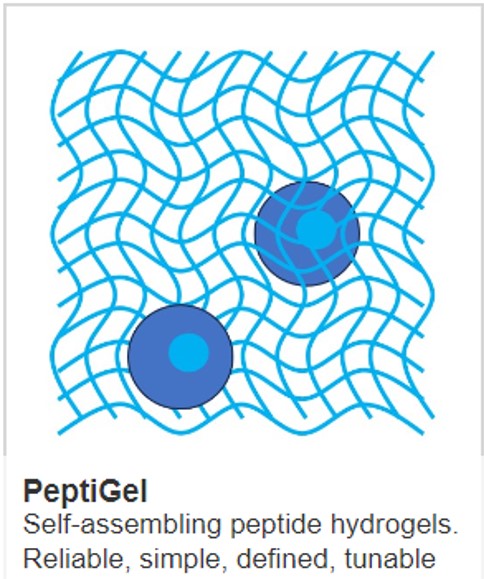Advantages and challenges of SAPHs as anti-microbials

Increasing antibiotic resistance amongst pathogens is alarming. Self-assembling peptides (SAPHs) such as PeptiGel are a class of peptides that can spontaneously organize into well-defined structures, such as fibres, gels, or nanoparticles, under certain conditions. When designed to have antimicrobial properties, these peptides can offer several benefits and face various challenges when used as anti-microbial peptides (AMPs).
Benefits of SAPHs as AMPs:
- Enhanced Stability: some SAPHs can form stable structures that are less susceptible to degradation by proteases, which can increase their half-life and effectiveness in biological environments. Ultimately, they are biodegradable.
- Controlled Release: The self-assembling properties of SAPHs can be exploited to create materials that release AMPs in a controlled manner, potentially reducing the frequency of dosing and improving patient compliance.
- Multivalency: The ability of SAPHs to form higher-order structures can lead to multivalent interactions with microbial membranes, which can enhance their antimicrobial activity.
- Targeted Delivery: SAPHs can be engineered to target specific microbial populations or infected tissues, reducing their off-target effects and improving therapeutic outcomes.
- Synergistic Effects: SAPHs can be designed to incorporate multiple AMPs or to work in conjunction with other anti-microbial agents, potentially leading to synergistic effects that enhance their overall antimicrobial efficacy.
- Reduced Resistance Development: The mechanism of action of SAPHs often involves physical disruption of microbial membranes, which may reduce the likelihood of resistance development compared to traditional antibiotics that target specific biochemical pathways.
- Biocompatibility: SAPHs can be synthesized from naturally occurring amino acids, making them potentially biocompatible and less likely to elicit an immune response.
- Versatility: The self-assembly process can be tuned by modifying environmental conditions (such as pH, temperature, and ionic strength) or peptide sequence, allowing for the creation of a wide range of materials with different properties and functions.
Challenges of SAPHs as AMPs:
- Complex Design: Designing SAPHs that balance antimicrobial activity with self-assembly and biocompatibility is complex and requires a deep understanding of peptide chemistry and structure-function relationships.
- Scalability: The synthesis and purification of SAPHs can be challenging and costly, particularly when scaling up for clinical use or commercial production.
- Regulatory Hurdles: As with any novel therapeutic, SAPHs must undergo rigorous testing and regulatory approval processes, which can be lengthy and expensive. Ensuring that SAPHs meet safety and efficacy standards is critical but can be a significant barrier to their development and market entry.
- Stability Concerns: While SAPHs can be more stable than individual peptides, their self-assembled structures may still be sensitive to environmental conditions, which can affect their storage, shelf life, and performance in vivo.
- Toxicity: The same properties that make SAPHs effective against microbes can also pose a risk of toxicity to host cells. Ensuring selective toxicity against microbial cells while minimizing harm to mammalian cells is a key challenge.
- Immunogenicity: Despite their potential biocompatibility, there is still a risk that SAPHs could elicit an immune response, especially with repeated administration or if the peptides are derived from non-human sources.
- Understanding Mechanisms: The precise mechanisms by which SAPHs exert their antimicrobial effects are not always fully understood, which can hinder the optimization and rational design of new SAPHs. More research is needed to elucidate how these peptides interact with microbial membranes and other cellular components.
- Environmental Impact: The long-term environmental impact of introducing synthetic SAPHs, particularly their potential to disrupt microbial communities or affect non-target organisms, needs to be assessed.
- Resistance Monitoring: Although SAPHs may initially have a lower propensity for resistance development, continuous monitoring is necessary to detect and address any emerging resistance patterns over time.
Self-assembling peptides hold great promise as a novel class of antimicrobial agents due to their unique properties and potential advantages over traditional antibiotics. However, realizing their full potential will necessitate overcoming significant scientific, technical, regulatory, and economic challenges. Continued research and development, supported by collaboration across disciplines and sectors, will be essential to harness the benefits of SAPHs for clinical use and to contribute to the global effort to combat antimicrobial resistance.
IMAGE - Shutterstock



